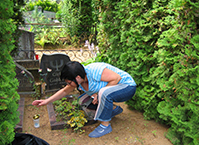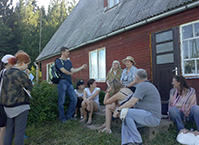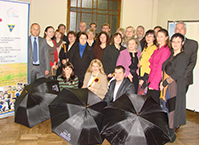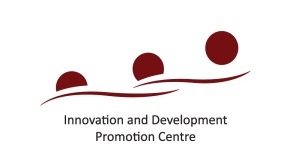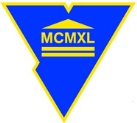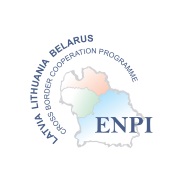E-MUSEUM “VITAMEMORIAE”: COLLECTION AND RESEARCH
Foto
To record people’s life stories, traditions, customs, rituals, rare photographs, old documents, ethnographic differences in funeral rites, etc. the researchers of Daugavpils University and Yanka Kupala Grodno State University carried out field studies in LV and BY territories: in the villages of Krāslava, Rēzekne, Daugavpils regions (Asūne, Foļvarka, Kruki, Skrudaliena, Indra, etc.) and in Belarus (Braslav and Vitebsk districts). The field studies were implemented in the framework of the project “Popularization of the Centres of Oral History in the LV – BY Cross-Border Area”, ID Nr. LLB–2–143, of the Cross Border Cooperation Programme Latvia–Lithuania–Belarus implemented within the framework of the European Neighbourhood and Partnership Instrument 2007–2013.
During the research and the expeditions, the project implementers collected, segmented, transcribed, and digitized the audio-visual materials (audio and video records, photo evidence). To make the collection of the E-Museum more complete, the field researchers and cemetery researchers of Daugavpils University and Grodno University will segment and systematize the audio-visual materials collected during oral history, cemetery research, folklore and dialectology expeditions of the previous years that until now have not been used, aiming at including the best and most valuable segments of the collection into the E-Museum.
The story tellers whose life stories make the input of the E-Museum are people of various generations, mostly elderly people. The childhood of aged people, who at present are about 80 years old, proceeded in the 1930s, therefore the segmented audio-visual units included in the E-Museum chronologically begin from 1929 and can describe only the respondents’ childhood memories. The memory of the older generation is particularly important for the anthropological and historical research – it shifts the time borders, allows for moving to the events of the past through the viewpoints of those who have experienced those times. The facts can be found in chronicles, but what the witnesses of that time can reveal give the memories colour, scent, involve one into mutual emotional experience. The witnesses of the epoch tell about the events form the viewpoint of their own experience.
To motivate the respondents to share their life stories, the project field researchers used Paul Thomson’s oral history research method – enlarged vision of social history where diverse groups of the society are brought together and share common historical experience.
The research basis is the methodology of a semi-structured interview that envisages focused (guided) reconstruction of the past events and an interviewer only helps the respondents to reconstruct the past.
The oral history collection of the E-Museum is envisaged to be used not only by specialists but also by a greatest possible range of non-specialists, therefore, departing from the academic tradition envisaging a complete script and transcript (written transcription of an audio or video record) of life stories, the project experts agreed to segment 360 most vivid, colourful, expressive, unusual, typological or extraordinary audio-visual units (photo, video and audio testimonies) – thematically complete excerpts, and to systematize them according to the thematic plan that would encompass both the historical processes of the 20th century (from the 1920s-30s) and the most essential events of an individual’s life.
ACCESSIBILITY OF THE COLLECTION
The interviews included into the collection are arranged according to the principle of historicism, anthropologism and personalia, indicating the author’s name and the interviewer’s name and surname.
-
Cheslava Gomonchuk: About the Gipsies
There were such oaks between Putrishki and Yaloushchyna. They had a dwelling there. They stole hens. My elder sister, I was an eighth child in the family, gave to birth in 1948. There were 2 …
Researcher: Alexei Zagidulin, PhD (Historical Sciences), associated professor at Yanka Kupala State University of Grodno
Categories: Residence and weekdays, Cheslava Gomonchuk
-
Cheslava Gomonchuk: Partisans
I heard the sounds, voices, cries.
The people filled up with ground, the Germans stopped those who were going along the road, with the shovel… later they let them go, and they even kicked …
Researcher: Alexei Zagidulin, PhD (Historical Sciences), associated professor at Yanka Kupala State University of Grodno
Categories: Wartime, Cheslava Gomonchuk
-
Cheslava Gomonchuk: Memories about the War
My relatives were engaged into communication with partisans. When they had heard about something, they transmitted it to them. Like a scout-dog.
When my brother was released from the concentration …
Researcher: Alexei Zagidulin, PhD (Historical Sciences), associated professor at Yanka Kupala State University of Grodno
Categories: Wartime, Cheslava Gomonchuk
-
Cheslava Gomonchuk: War burial dumping in Putrishky
There is burial dumping in the forest. There was a field close to it, we were self-employed farmers. We had a lot of land. I was a teenager then, I used to go to the field. There were oats there. …
Researcher: Alexei Zagidulin, PhD (Historical Sciences), associated professor at Yanka Kupala State University of Grodno
Categories: Wartime, Cheslava Gomonchuk
-
Viktor Kolokolnikov: School before the war
And I studied for five years in Minsk. About five years. And in 1939 when the liberation of Western Belarus started… my father was a part of the military unit that was liberating the city of …
Researcher: Natalya Ivaschenko, PhD (Historical Sciences), associated professor at Yanka Kupala State University of Grodno, Kseniya Adasik, Yanka Kupala State University of Grodno
Categories: School, Viktor Kolokolnikov
-
Viktor Kolokolnikov: Defectors
During the war there were not only Bolsheviks and partisans. There were defectors there. Though, they were not as many as partisans. If there was an army of partisans in number of three hundred …
Researcher: Natalya Ivaschenko, PhD (Historical Sciences), associated professor at Yanka Kupala State University of Grodno, Kseniya Adasik, Yanka Kupala State University of Grodno
Categories: Mode of life, Viktor Kolokolnikov
-
Viktor Kolokolnikov: First childhood memory
Oh, frankly speaking, Kseniya Aleksandrovna, these are constant moves. Luggage, bags, large suitcases, temporary flats. Frankly speaking, you know, we were half-starved, almost half-starved. Frankly …
Researcher: Natalya Ivaschenko, PhD (Historical Sciences), associated professor at Yanka Kupala State University of Grodno, Kseniya Adasik, Yanka Kupala State University of Grodno
Categories: First childhood memory, Viktor Kolokolnikov
-
Mikhail Kripets: About soltys
You know I … me too to Germany, they wanted me to go to Germany. We were twelve of people. My father went to the soltys and gave a good going-over to him. He told, «Do you think I fought …
Researcher: Natalya Ivaschenko, PhD (Historical Sciences), associated professor at Yanka Kupala State University of Grodno, Kseniya Aadsik, Yanka Kupala State University of Grodno
Categories: Wartime, Mikhail Kripets
-
Mikhail Kripets: About the captives
We had two military officers left. One lived at the house where the handicapped lived, the other one lived at the Kuleshs’ place, one stayed at the Byalundziya’s place. Well, when the …
Researcher: Natalya Ivaschenko, PhD (Historical Sciences), associated professor at Yanka Kupala State University of Grodno, Kseniya Adasik, Yanka Kupala State University of Grodno
Categories: Wartime, Mikhail Kripets
-
Mikhail Kripets: About father
Well, at first my father was a bachelor. They were three of Kryptsy, in 1917 they went together with Lenin. My father told me how it had happened. So during the day they used to be at the bog land, …
Researcher: Natalya Ivaschenko, PhD (Historical Sciences), associated professor at Yanka Kupala State University of Grodno, Kseniya Adasik, Yanka Kupala State University of Grodno
Categories: Parents, Mikhail Kripets


